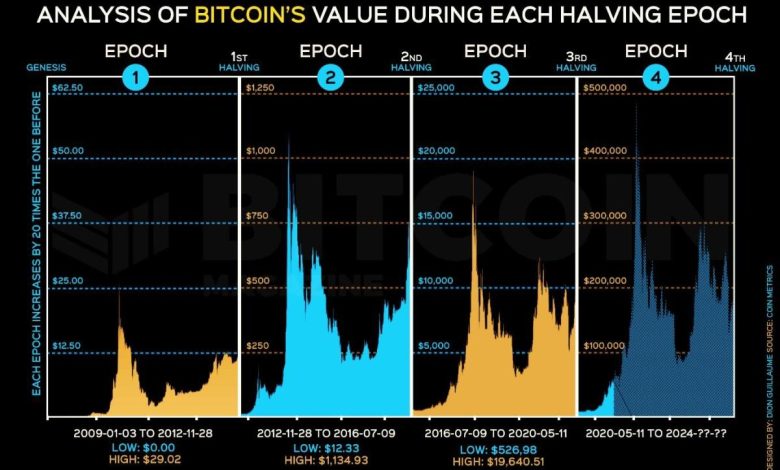Analyzing Altcoin Performance

- Understanding Altcoins: A Beginner’s Guide
- Factors Influencing Altcoin Performance
- Comparing Altcoin Returns: A Case Study
- Analyzing Altcoin Market Trends
- The Role of Technology in Altcoin Success
- Predicting Future Altcoin Performance
Understanding Altcoins: A Beginner’s Guide
When delving into the world of altcoins, it is essential to have a solid understanding of what they are and how they differ from the more well-known cryptocurrency, Bitcoin. Altcoins are alternative cryptocurrencies to Bitcoin, with thousands of different options available in the market. These coins can serve various purposes, from offering improved privacy features to enabling smart contracts on their blockchain networks.
One key aspect to consider when analyzing altcoin performance is their market capitalization. Market capitalization is calculated by multiplying the current price of the altcoin by the total number of coins in circulation. This metric gives you an idea of the overall value of the altcoin and its relative size in the cryptocurrency market.
Another crucial factor to examine is the trading volume of the altcoin. Trading volume refers to the total number of coins that have been traded within a specific period, typically 24 hours. High trading volume indicates a high level of interest and activity in the altcoin, which can lead to increased liquidity and price stability.
It is also essential to research the technology and team behind the altcoin. Understanding the technology that powers the altcoin, such as its consensus mechanism and scalability solutions, can give you insight into its potential for long-term success. Additionally, evaluating the experience and expertise of the development team can help you assess the altcoin’s ability to deliver on its promises.
Factors Influencing Altcoin Performance
Factors influencing altcoin performance can vary widely and are essential to consider when analyzing the market. Several key factors can impact the value and success of altcoins, including market demand, technological advancements, regulatory developments, and overall market sentiment.
Market demand plays a significant role in determining the performance of altcoins. The level of interest and demand from investors and users can drive up the value of a particular altcoin. Additionally, technological advancements such as upgrades to the blockchain network or the introduction of new features can also positively impact an altcoin’s performance.
Regulatory developments are another crucial factor that can influence the performance of altcoins. Changes in regulations or government policies regarding cryptocurrencies can have a significant impact on the market. Positive regulatory news can boost investor confidence and drive up the value of altcoins, while negative news can lead to a decrease in value.
Overall market sentiment is also a key factor in determining altcoin performance. The general mood of the market, including factors such as investor confidence, fear, and uncertainty, can all impact the value of altcoins. Positive sentiment can lead to increased investment and higher prices, while negative sentiment can result in a decrease in value.
In conclusion, when analyzing altcoin performance, it is essential to consider a variety of factors that can influence the market. By understanding the impact of market demand, technological advancements, regulatory developments, and overall market sentiment, investors can make more informed decisions when trading altcoins.
Comparing Altcoin Returns: A Case Study
When it comes to analyzing altcoin performance, a case study comparing returns can provide valuable insights. By examining how different altcoins have fared over a specific period, investors can gain a better understanding of which cryptocurrencies have outperformed others.
One way to conduct this comparison is by looking at the percentage returns of various altcoins over a set timeframe. This can help investors identify trends and patterns in the market and make more informed decisions about where to allocate their capital.
For example, by analyzing the returns of altcoins such as Ethereum, Litecoin, and Ripple over the past year, investors can see which cryptocurrency has provided the highest return on investment. This information can be crucial for those looking to maximize their profits in the crypto market.
By comparing altcoin returns through a case study, investors can gain valuable insights into which cryptocurrencies have performed well and which ones have lagged behind. This information can help investors make more informed decisions about their investment strategies and potentially increase their profits in the crypto market.
Analyzing Altcoin Market Trends
When it comes to analyzing altcoin market trends, there are several key factors to consider. One important aspect is to look at the overall performance of the altcoin market compared to other cryptocurrencies. By examining how altcoins are performing in relation to Bitcoin and Ethereum, investors can gain valuable insights into the health of the market.
Another crucial factor to consider when analyzing altcoin market trends is to look at the trading volume of different altcoins. High trading volume can indicate increased interest and activity in a particular altcoin, which may lead to price movements. On the other hand, low trading volume could signal a lack of interest or liquidity in the market.
It is also essential to pay attention to market capitalization when analyzing altcoin trends. Market capitalization reflects the total value of a cryptocurrency and can provide insights into its overall popularity and adoption. Altcoins with high market capitalization are generally considered more stable and less volatile compared to those with lower market capitalization.
Furthermore, keeping an eye on social media and news sentiment can also help in analyzing altcoin market trends. Positive news and sentiment around a particular altcoin can drive up its price, while negative news can have the opposite effect. Monitoring social media platforms and news outlets can provide valuable insights into market sentiment and potential price movements.
The Role of Technology in Altcoin Success
Technology plays a crucial role in the success of altcoins in the cryptocurrency market. The innovative use of blockchain technology, smart contracts, and decentralized applications (dApps) sets altcoins apart from traditional fiat currencies. Altcoins leverage these technological advancements to offer unique features and functionalities that appeal to investors and users.
One key aspect of technology that contributes to the success of altcoins is scalability. Altcoins that can handle a high volume of transactions quickly and efficiently are more likely to gain widespread adoption. Scalability is essential for altcoins to compete with established cryptocurrencies like Bitcoin and Ethereum.
Another important factor is security. Altcoins that prioritize security measures such as encryption, multi-signature wallets, and regular security audits are more likely to attract investors looking for a safe investment option. Security breaches and hacks can severely damage the reputation of an altcoin and hinder its growth.
Furthermore, the user experience provided by altcoin technology is crucial for its success. Altcoins that offer intuitive interfaces, fast transaction speeds, and low fees are more likely to be adopted by users for everyday transactions. A seamless user experience can drive mass adoption and increase the value of an altcoin.
In conclusion, technology is a driving force behind the success of altcoins in the cryptocurrency market. Altcoins that leverage innovative technologies, prioritize scalability and security, and offer a seamless user experience are more likely to thrive in a competitive market environment.
Predicting Future Altcoin Performance
When it comes to predicting the future performance of altcoins, there are several factors to consider. One key aspect is to analyze the historical data of the altcoin in question. By looking at past trends and patterns, investors can gain insights into how the altcoin may perform in the future. Additionally, it is essential to stay informed about any upcoming developments or news related to the altcoin, as this can have a significant impact on its price.
Another important factor to consider is the overall market conditions. The cryptocurrency market is highly volatile, and external factors such as regulatory changes or market sentiment can influence the performance of altcoins. By keeping an eye on the broader market trends, investors can better predict how a particular altcoin may fare in the future.
Technical analysis is also a valuable tool for predicting the future performance of altcoins. By studying charts and indicators, investors can identify potential trends and make informed decisions about when to buy or sell. It is crucial to combine technical analysis with other forms of research to get a comprehensive understanding of an altcoin’s potential performance.






